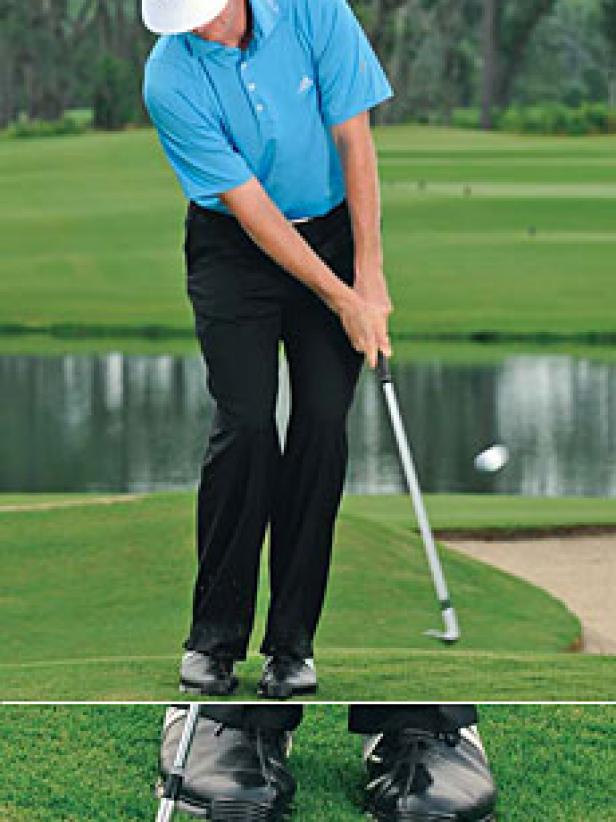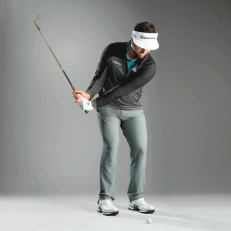The Short Checker
From just off the fringe, with the green running downhill, you need a shot that lands softly, checks up and releases. Using my 60-degree wedge, I open the face slightly and play the ball off the outside of my right foot (bottom photo). Playing it back guarantees a descending blow for solid contact, and the open face adds loft and spin. The swing is a simple arm motion back and through—no wrist hinge. Land it on the green, and it'll grab on the second bounce and creep down to the hole.
The Hands-Free Lob
I learned this shot from Phil Mickelson. It's perfect for getting to a tight pin without taking as much risk as you do with a long, wristy lob. I play the ball just forward of center (bottom photo), with my hands even with the ball. I lay open the face of my 60-degree, then swing halfway back, keeping my wrists pretty firm. Coming down, I think about cutting the legs out from under the ball with a shallow, skimming strike. With less wrist hinge than the full-swing lob, it's easier to control distance.
The Hook Chip
When you're chipping to a back pin, you need a shot that doesn't check up. I think of this as a little hook shot—a more rounded swing where the clubface rotates over through impact. I use my 54-degree and set the ball off my right instep. I also toe in the clubface at address (bottom photo), which helps me put right-to-left spin on the ball for a hotter roll. The swing is a little more inside going back, and then in to out through impact, with the face turning over.
The Upslope Blast
With the ball on an upslope in the sand, I use my 60-degree unless the flag is across the green, then I might go to my 54 or pitching wedge. I play the ball off my left heel (bottom photo)and set 70 percent of my weight on my left foot. From there, I make a half-swing back and through, swinging the club up the slope, not into it. You have to make a full wrist hinge to create speed. Amateurs don't swing hard enough in bunkers: Pound the sand and accelerate through.






